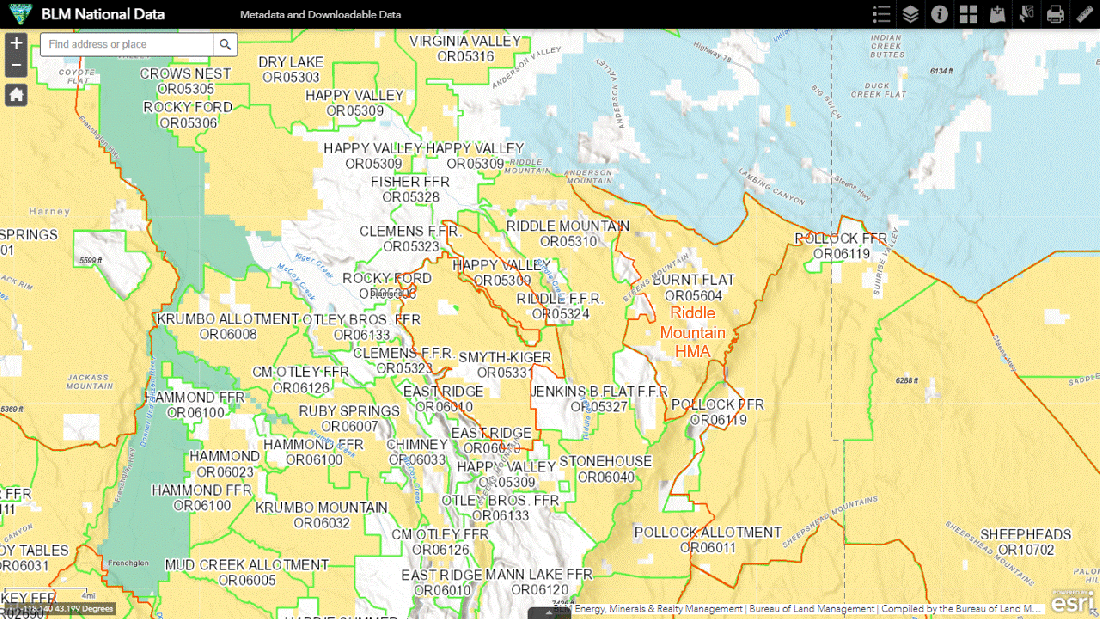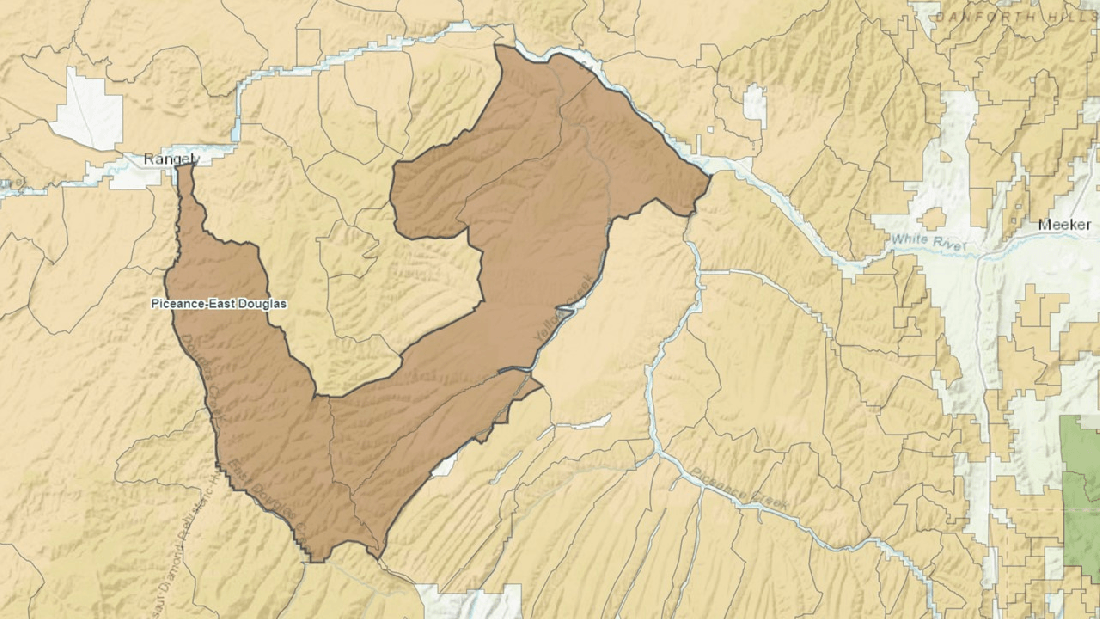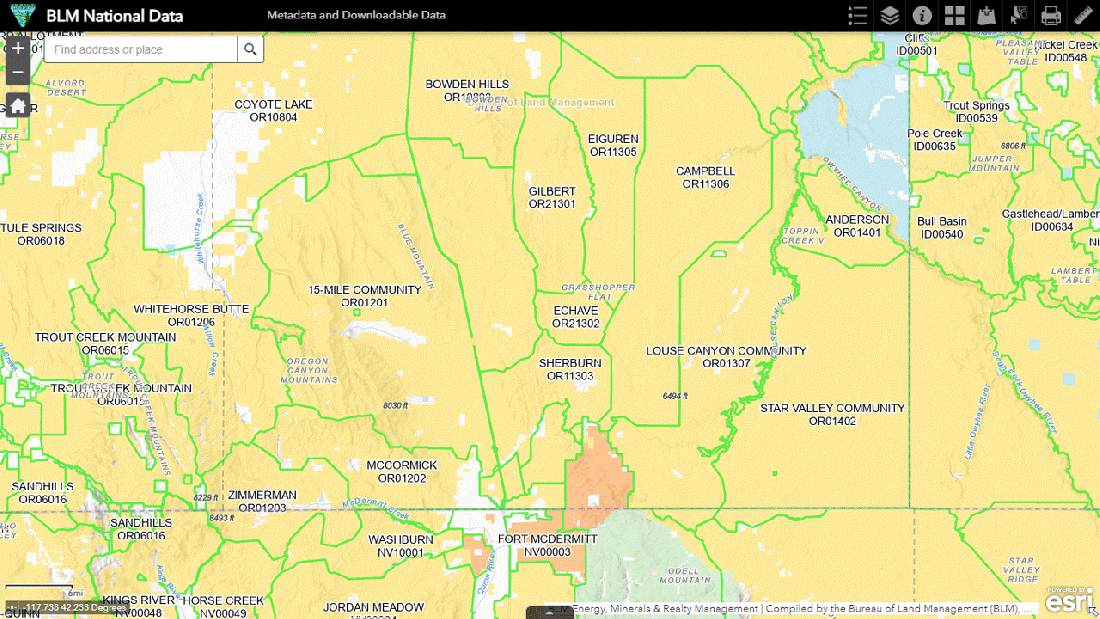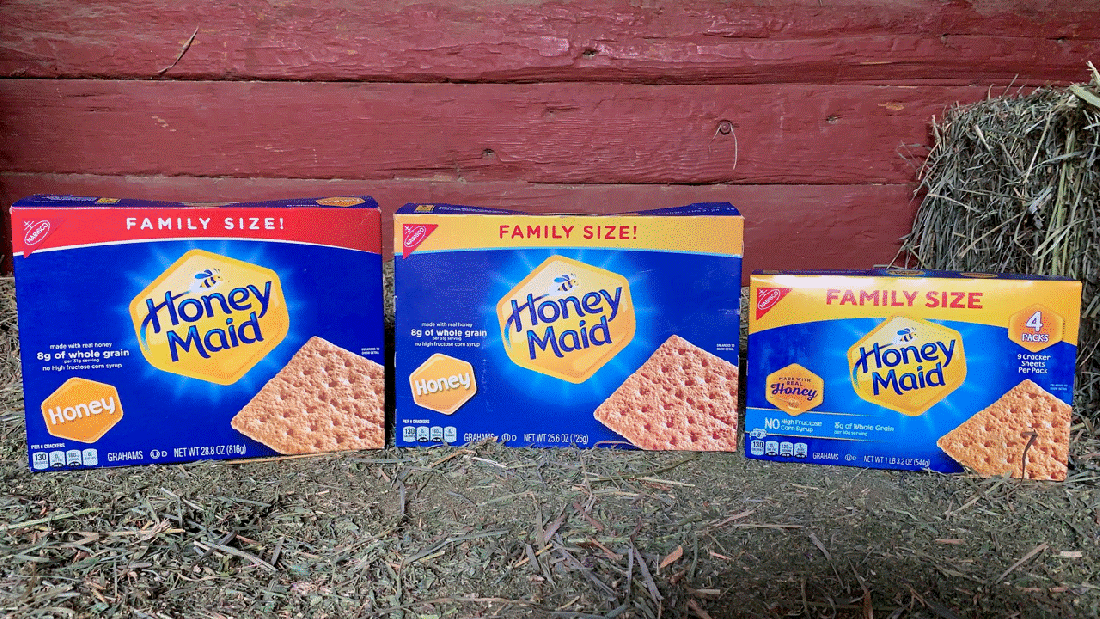The HMA covers 32,666 total acres in eastern Oregon, including 28,331 public acres, according to the 2023 HA/HMA Report.
The 56 horses allowed by plan receive 672 AUMs per year.
The stocking rate allowed by plan is two wild horses per thousand public acres.
The land must be able to produce at least 23.7 AUMs per year per year per thousand public acres to sustain the horses.
Can it produce more?
The HMA intersects one allotment.
Chapter IIIB in a 2011 EA for pest control and resource enforcement identifies it as Burnt Flat.
Table 2 says 99% of the allotment is inside the HMA, which seems reasonable based on the arrangement in the National Data Viewer.
The allotment boundary includes some private lands the HMA does not.
The Allotment Master Report provides management status, acreage and active AUMs.

Although it’s in the Improve category, the allotment offers an estimated 3,824 AUMs per year to livestock inside the HMA, compared to 672 AUMs per year for wild horses.
How is that possible? It’s the same land!
A guiding principle in developing the land-use plan, apparently, was that the ranchers would prosper, not the horses, even though it’s the lawful home of wild horses.
The forage assigned to livestock would support 318 wild horses, on top of the 56 allowed by plan, for a True AML of 374.
This would be achieved by confining the permittee to his base property in a year-round off season.
The stocking rate at the new AML would be 13.2 wild horses per thousand public acres.
This brings more distress to the bureaucrats and ranchers, who insist that public lands in the western U.S. can only support one wild horse per thousand acres (27,000 animals on 27 million acres).
As for costs, the BLM collects 3,824 × 1.35 = $5,162 per year from ranching activity inside the HMA while it spends 318 × 5 × 365 = $580,350 per year to care for the horses displaced thereby.
Would you say that’s a wise use of the public lands?
RELATED: How Many Wild Horses Can the Kiger HMA Support?















